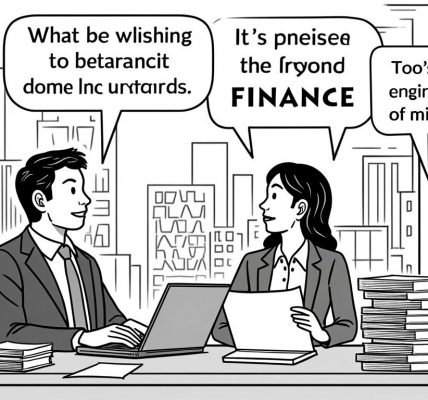
Altcoins Explained: Diversifying Your Crypto Investments
Reading time: 12 minutes
Ever wondered why Bitcoin gets all the headlines while thousands of other cryptocurrencies quietly build revolutionary technologies? You’re about to discover the untapped potential of altcoins—and why smart investors are diversifying beyond the crypto king.
Table of Contents
- What Are Altcoins and Why They Matter
- Major Altcoin Categories Explained
- Building Your Altcoin Diversification Strategy
- Top Altcoins by Category: Real-World Analysis
- Navigating Risks and Common Pitfalls
- Your Strategic Portfolio Blueprint
- Frequently Asked Questions
What Are Altcoins and Why They Matter
Here’s the straight talk: altcoins (alternative coins) represent every cryptocurrency except Bitcoin. With over 20,000 altcoins in existence as of 2024, they’ve evolved from simple Bitcoin copies into sophisticated blockchain ecosystems solving real-world problems.
Consider this scenario: While Bitcoin processes 7 transactions per second, Ethereum handles smart contracts, Solana processes 65,000 transactions per second, and Chainlink connects blockchains to real-world data. Each serves a unique purpose in the digital economy.
The Evolution Beyond Digital Gold
Bitcoin established the foundation, but altcoins built the infrastructure. Here’s what makes them compelling:
- Technological Innovation: Smart contracts, DeFi protocols, NFT marketplaces
- Scalability Solutions: Faster transactions, lower fees, energy efficiency
- Specialized Applications: Gaming, supply chain, healthcare, identity verification
- Investment Opportunities: Higher growth potential, though with increased risk
Pro Tip: The right altcoin diversification isn’t just about spreading risk—it’s about positioning yourself across multiple blockchain ecosystems before they reach mainstream adoption.
Major Altcoin Categories Explained
Let’s break down the essential altcoin categories that serious investors should understand:
Smart Contract Platforms
Think of these as the “operating systems” of blockchain. Ethereum pioneered this space, but competitors like Binance Smart Chain, Cardano, and Avalanche offer faster, cheaper alternatives.
Key Players: Ethereum (ETH), Binance Coin (BNB), Cardano (ADA), Solana (SOL)
DeFi (Decentralized Finance) Tokens
These power the new financial system—lending, borrowing, trading, and yield farming without traditional banks.
Popular Examples: Uniswap (UNI), Aave (AAVE), Compound (COMP)
Layer 2 Solutions
Built to solve blockchain scalability issues by processing transactions off the main chain while maintaining security.
Notable Projects: Polygon (MATIC), Optimism (OP), Arbitrum (ARB)
Utility and Governance Tokens
These provide access to specific services or voting rights within their ecosystems.
Altcoin Market Dominance Comparison
Building Your Altcoin Diversification Strategy
Well, here’s the reality: Successful crypto diversification isn’t about buying everything—it’s about strategic selection across proven categories.
The 70-20-10 Portfolio Framework
Based on risk tolerance analysis from leading crypto investment firms:
- 70% Established Altcoins: Top 10 cryptocurrencies with proven track records
- 20% Mid-Cap Opportunities: Projects ranked 11-50 with strong fundamentals
- 10% High-Risk, High-Reward: Emerging technologies and moonshot investments
Real-World Case Study: In 2021, an investor following this framework would have allocated 70% to coins like Ethereum and BNB, 20% to projects like Polygon and Chainlink, and 10% to newer DeFi tokens. This approach provided substantial returns while limiting catastrophic losses during market downturns.
Sector Diversification Approach
| Sector | Allocation % | Risk Level | Examples | Growth Potential |
|---|---|---|---|---|
| Smart Contracts | 35% | Medium | ETH, ADA, SOL | High |
| DeFi Protocols | 25% | High | UNI, AAVE, SUSHI | Very High |
| Layer 2 Solutions | 20% | Medium-High | MATIC, OP, ARB | High |
| Infrastructure | 15% | Medium | LINK, DOT, ATOM | Medium-High |
| Emerging Sectors | 5% | Very High | Gaming, AI, RWA | Speculative |
Top Altcoins by Category: Real-World Analysis
Smart Contract Leaders
Ethereum (ETH): Despite high gas fees, ETH remains the dominant smart contract platform with $60+ billion in Total Value Locked (TVL). The recent transition to Proof-of-Stake reduced energy consumption by 99.9%.
Solana (SOL): Processes 65,000 transactions per second at near-zero cost. However, network outages in 2022-2023 raised reliability concerns.
DeFi Powerhouses
Uniswap (UNI): The largest decentralized exchange by volume, processing over $1 trillion in lifetime trading volume. UNI holders vote on protocol governance and fee structures.
Case Study: During the 2022 crypto winter, while many DeFi tokens lost 80-90% of their value, established protocols like Uniswap and Aave maintained stronger fundamentals due to consistent usage and revenue generation.
Infrastructure and Interoperability
Chainlink (LINK): The leading oracle network connecting blockchains to real-world data. Used by over 1,500 projects across multiple blockchains.
Polkadot (DOT): Enables different blockchains to communicate and share security through its innovative parachain architecture.
Navigating Risks and Common Pitfalls
Let’s address the elephant in the room: altcoin investing carries significant risks that can devastate unprepared investors.
The Volatility Reality Check
Statistics from CoinMarketCap show that altcoins typically experience 2-3x higher volatility than Bitcoin. During the 2022 bear market, the average altcoin declined 85% from its peak, compared to Bitcoin’s 77% decline.
Common Mistakes to Avoid
- FOMO Investing: Chasing pumping coins without research
- Overconcentration: Putting too much into a single altcoin
- Ignoring Fundamentals: Buying based on hype rather than utility
- Neglecting Security: Storing altcoins on exchanges without proper custody
Quick Scenario: Imagine you invested $10,000 equally across Bitcoin and five random altcoins in early 2022. By year-end, the altcoin portion likely lost 80-90%, while Bitcoin “only” lost 65%. This illustrates why research and diversification matter.
Due Diligence Framework
Before investing in any altcoin, evaluate these factors:
- Team Credibility: Public identities, track record, technical expertise
- Use Case Validity: Solves real problems, not just theoretical concepts
- Tokenomics: Supply schedule, inflation rate, utility within ecosystem
- Community and Adoption: Active development, growing user base
- Competitive Position: Advantages over existing solutions
Your Strategic Portfolio Blueprint
Ready to transform complexity into competitive advantage? Here’s your actionable implementation roadmap:
Phase 1: Foundation Building (Months 1-3)
Start with 3-5 established altcoins across different categories. Focus on learning before expanding. Suggested starting allocation:
- 40% Ethereum: Established smart contract leader
- 20% Binance Coin: Exchange utility and BSC ecosystem
- 20% Solana: High-performance blockchain alternative
- 10% Chainlink: Oracle infrastructure play
- 10% Cash Reserve: For opportunities and rebalancing
Phase 2: Strategic Expansion (Months 4-6)
Add exposure to emerging sectors and mid-cap opportunities. Consider DeFi protocols, Layer 2 solutions, and specialized infrastructure projects.
Risk Management Essentials
- Never invest more than 5-10% of your total portfolio in crypto
- Set stop-loss levels at 20-30% for individual altcoins
- Rebalance quarterly to maintain target allocations
- Take profits systematically during bull markets
Pro Tip: Use dollar-cost averaging to build positions over 3-6 months rather than lump-sum investing. This reduces timing risk in volatile markets.
Frequently Asked Questions
How many altcoins should I own in my portfolio?
For most investors, 5-10 altcoins provide adequate diversification without becoming unmanageable. Focus on quality over quantity—owning 50 random altcoins creates more risk than diversification. Start with 3-5 established projects across different categories, then gradually expand as your knowledge grows.
When is the best time to buy altcoins?
The optimal strategy is dollar-cost averaging during bear markets or sideways price action, typically when Bitcoin dominance is above 45-50%. Avoid buying during euphoric bull runs when altcoins hit new highs. Historical data shows the best altcoin buying opportunities occur 12-18 months after major market peaks.
Should I hold altcoins long-term or trade them actively?
For most investors, a long-term hold strategy (1-4 years) with established altcoins outperforms active trading. However, consider taking partial profits during major bull runs and reaccumulating during bear markets. Active trading requires significant time, skill, and emotional discipline that most retail investors lack.
Your Altcoin Investment Roadmap: Next Steps
The altcoin landscape offers unprecedented opportunities for investors willing to navigate its complexities strategically. Success requires balancing innovation exposure with risk management, focusing on fundamentals over hype, and maintaining discipline during both euphoric rallies and devastating crashes.
Your immediate action plan:
- Start with 2-3 established altcoins across different sectors
- Allocate only 5-10% of your total investment portfolio to crypto
- Set up proper security measures and cold storage solutions
- Create a systematic approach for research and due diligence
- Establish clear profit-taking and loss-cutting rules
The blockchain revolution is still in its early innings, with institutional adoption accelerating and regulatory clarity improving. By building a diversified altcoin portfolio today, you’re positioning yourself at the intersection of technological innovation and financial opportunity.
What’s your first step toward building a strategic altcoin portfolio that aligns with your risk tolerance and investment goals?

Article reviewed by Michelle Hope, Real Estate and Investment Expert, on July 2, 2025




